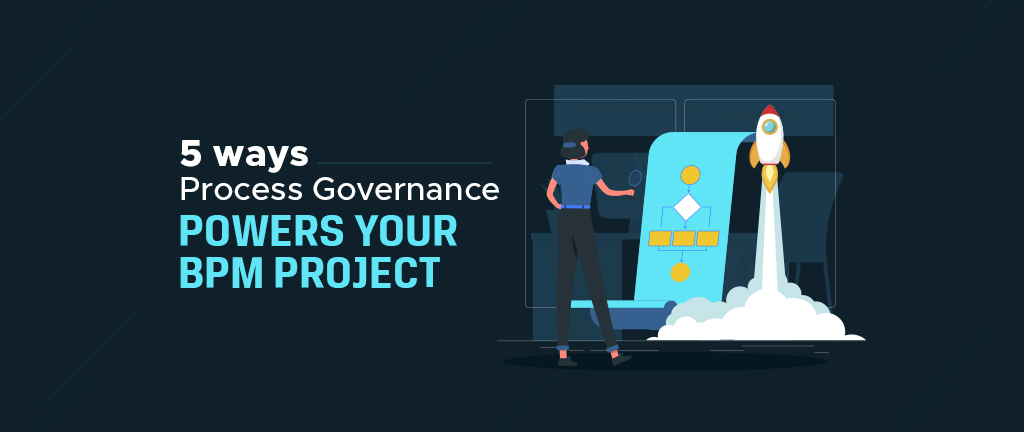What is the biggest issue that leads to delays, unrealised benefits and loss of momentum with BPM projects? A number of organisation, which fail to maximise the business value from their BPM initiative, have one thing in common—inconsistent and disconnected process management efforts across the organisation.
Without any guidelines and rules, process management initiatives remain isolated, resulting in low, localised results. As these initiatives are managed by various department heads on top of their BAUs, it’s difficult to sustain the initial momentum and get the expected ROI.
This is where a robust Process Governance structure comes to the rescue by defining all the critical elements required for how a business process improvement project will be managed within an organisation.
What is Process Governance?
Process Governance is essential for organisations to consolidate their company-wide BPM initiatives. It is a framework to facilitate process management by defining standards, rules and guidelines to ensure consistent and integrated initiatives across the organisation.
In essence, Process Governance addresses the gap between improvement strategy and implementation and keeps a tab on the success of these BPM initiatives.
There are two types of Process Governance Models:
1. Centralised Process Governance: A central team controls BPM projects and process mapping efforts.
2. Decentralised Process Governance: Individual Business Units map, improve and maintain their processes.
Why is Process Governance Required?
Process Governance ensures consistent and integrated Process improvement efforts by:
● Establishing the overall process improvement objective
● Identifying process participants and responsibilities
● Defining the standards and methodology for process management
● Defining rules for process approval and implementation
● Understanding the criteria for success measurement
● Defining the toolset to use
How Process Governance Helps the BPM Project?
Below are the 5 ways Process Governance helps you ensure control over your BPM project:
1. Sustained Momentum
Process governance gives clarity on who will lead the initiative, who will map the processes and how the changes will be approved and implemented. With these details defined, the initial project momentum is not lost.
2. Common Methodology and Standards:
Process Governance defines common methodology, which ensures clear, succinct and standardised documentation for all organisational processes. Consistent documentation not only ensures standardised improvement across the organisation but also future-proofs initiatives, such as digital transformation.
3. Alignment with Organisational Objectives
Ensuring alignment with the organisation’s goals and future roadmap is a key advantage that comes with process governance. With common guidelines for business-wide improvement initiatives, you can keep track that all initiatives are in line with business objectives and requirements.
4. Collaborative Improvement
Process management and improvement is not an isolated project, it requires collaboration from across the business to avoid duplicate efforts and derive results. Process governance empowers teams to drive improvement collaboratively using set guidelines and clearly defined responsibilities and approval methods.
5. Continuous Improvement
Process governance also sets the foundation for continuous improvement by managing BPM initiatives within a defined framework. Dedicated responsibilities and defined BAUs help establish a culture of continuous improvement across the organisation.
Establish the Apt Process Governance Model
While process governance is a must-have, a more important question is which process governance model—Centralised or Decentralised—works for your organisation?
This actually depends on your business process maturity stage. For instance, if you are in the process building stage you need a different model from when you are in the process maintenance stage.
To understand your current process maturity and the suitable process governance model, watch the 30-minute Online On-Demand Process Governance course. Learn from a BPM expert how you can tap into the combined benefits of both governance models. Watch the session here.


